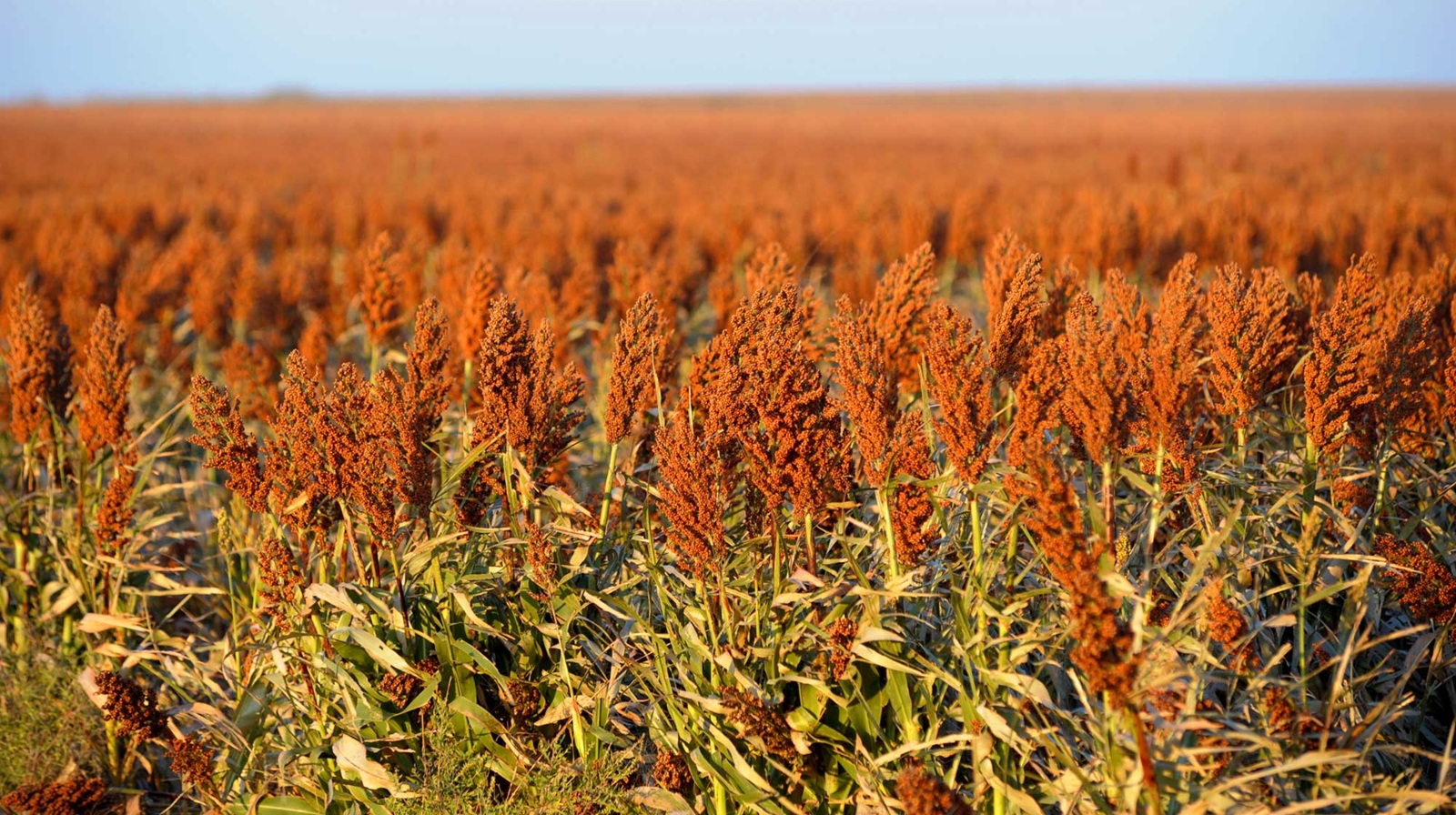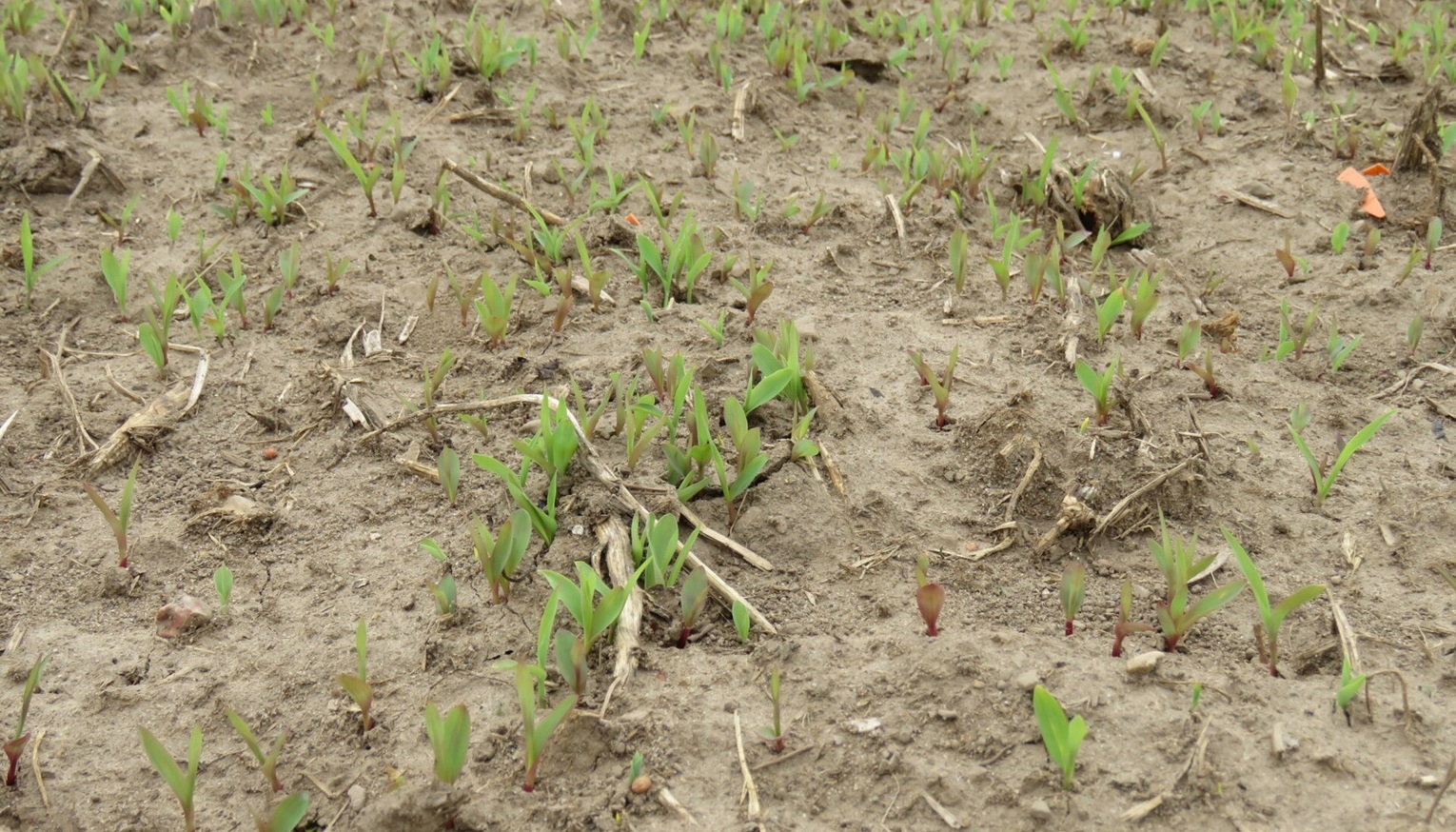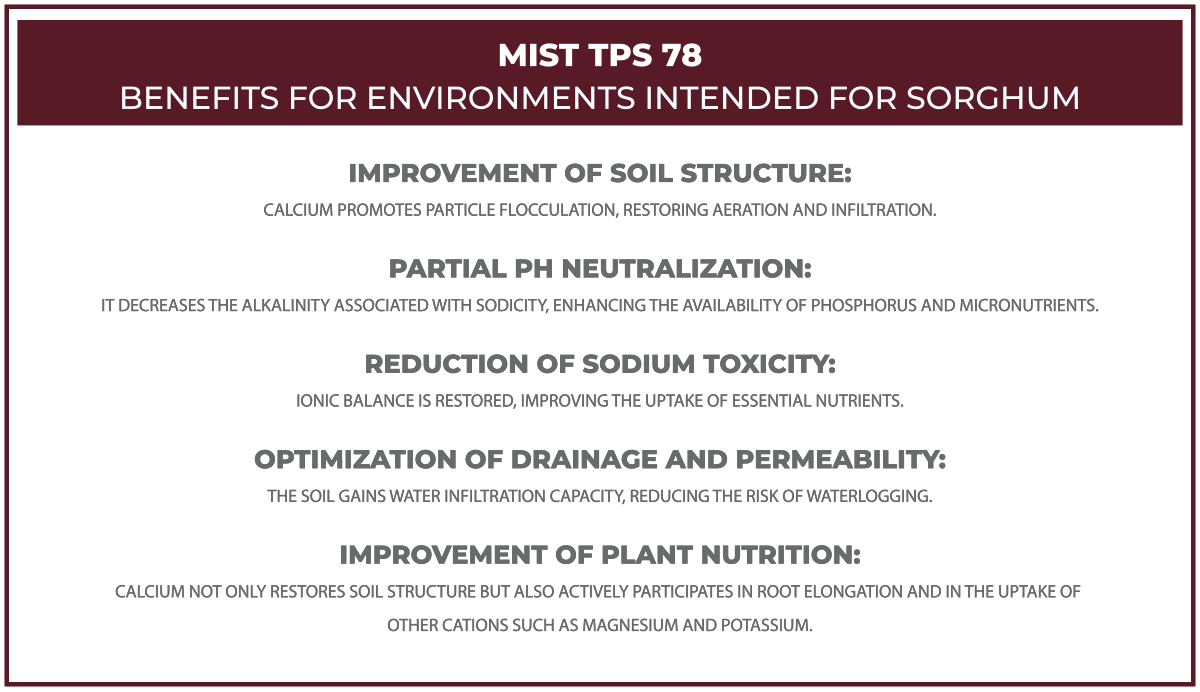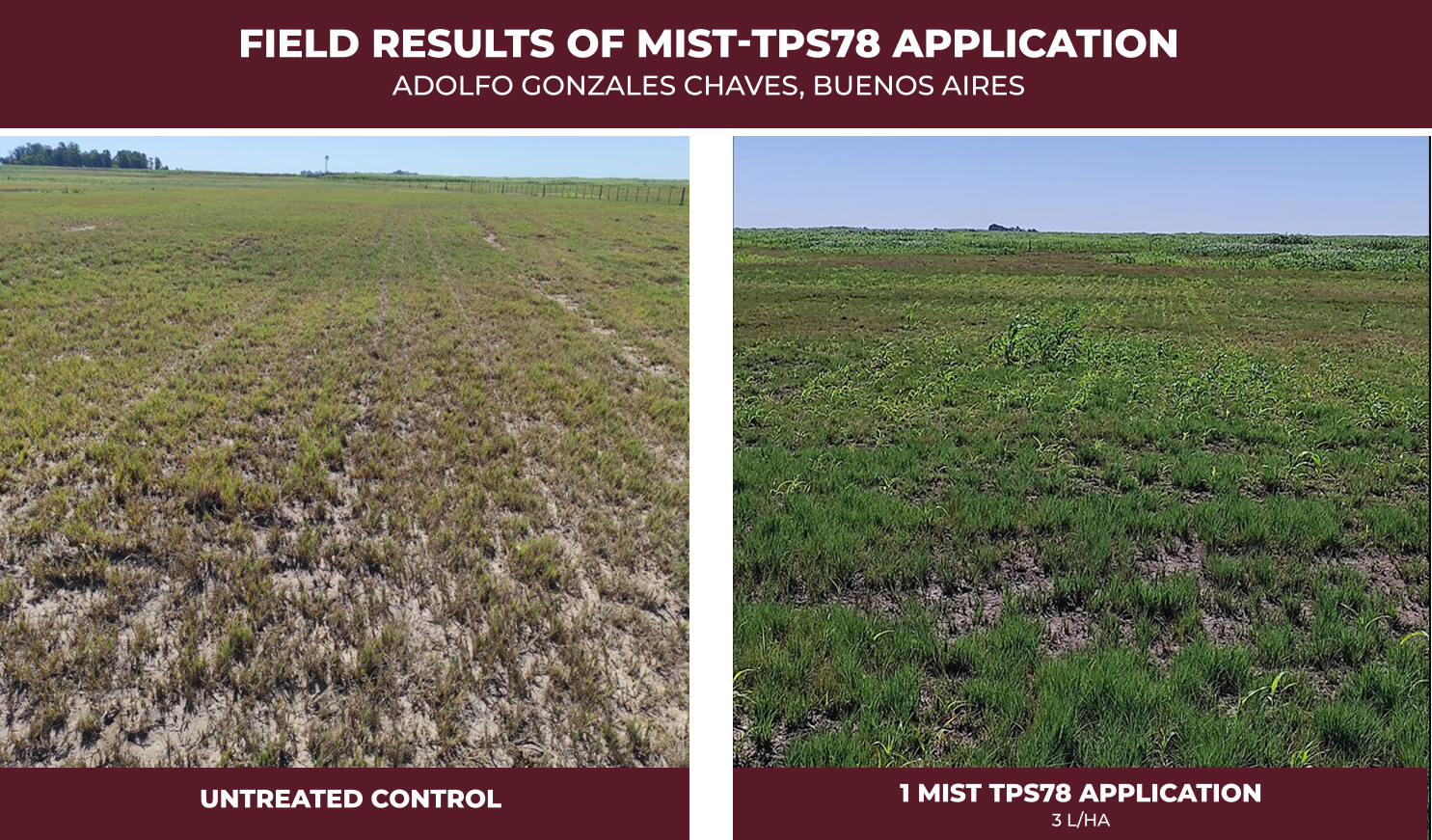EspañolEnglish

Sorghum yield largely depends on the physical and chemical properties of the soil. Compaction, nutritional deficiencies, and the presence of saline-sodic soils are increasing constraints in different regions. The incorporation of amendments with nanominerals, such as MIST TPS78®, emerges as an innovative strategy to restore soil structure and functionality, improving crop establishment conditions and initial development.
Sorghum is regaining prominence in Argentine agriculture. Its hardiness and versatility make it a strategic alternative in years of uncertainty. However, even though it is a more tolerant crop than others, achieving good yields depends to a great extent on soil conditions. Compaction, nutrient deficiencies, and the growing presence of saline-sodic soils are constraints that cannot be overlooked. In this context, innovative technologies such as MIST TPS78® provide concrete tools to improve soil structure and functionality, ensuring even crop emergence and a more stable growing cycle.
Sorghum is known as an “all-terrain” crop. Indeed, it adapts better than others to water shortages, high temperatures, and restrictive environments. Nevertheless, its yield potential is expressed most strongly in loam soils with good structure, aeration, and effective depth. In such conditions, roots can better explore the soil profile for water and nutrients, a key advantage to face the typical “water gaps” of summer.
In sandy soils with low water-holding capacity, the crop is more exposed to deficits, while in heavy clay soils, compaction and drainage problems hinder root aeration. Therefore, beyond genetics and management, soil health remains the foundation upon which sorghum productivity is built.
Saline-sodic soils: a growing limitation
In several agricultural regions of Argentina, especially in western Buenos Aires, the “pampa deprimida,” and areas with a history of flooding or waterlogging, saline-sodic soils are becoming increasingly common. These environments are characterized by excess sodium in the cation exchange complex, causing particle dispersion, loss of soil structure, and compaction issues, along with reduced infiltration and aeration.
High pH levels decrease the availability of essential nutrients such as phosphorus and zinc, while sodium toxicity interferes with the uptake of other elements. These conditions increase the risk of waterlogging and erosion, generating unstable environments that restrict root growth and reduce the efficiency of water and fertilizer use.
Although sorghum has greater relative tolerance to salinity compared with maize and soybean, the presence of saline-sodic soils still limits its productivity, especially when salinization is combined with compaction and waterlogging.

Soil recovery with nanoparticle technologies: the case of MIST TPS78® One of the most efficient strategies to mitigate the limitations of saline-sodic soils is the application of MIST TPS78®, an amendment based on high-purity calcium and sulfur nanominerals. Its action is based on displacing sodium from cation exchange sites and promoting its leaching through rainfall or irrigation, reducing its concentration in the root zone. These elements therefore play a dual role: improving the physical structure of the soil and providing essential nutrients for the crop.
This combination reduces compaction and surface crusting problems, while promoting a more favorable root environment. In addition, the supply of sulfur and calcium has direct benefits on sorghum nutrition, since the crop requires adequate levels of both nutrients to sustain yield and the quality of grain and forage.
The use of MIST TPS78® is particularly recommended in fields that have undergone secondary salinization or waterlogging, where sodium occupies exchange sites by displacing calcium and deteriorating soil structure. Its application progressively restores soil quality, allowing sorghum—a strategic crop for diversifying environments and stabilizing production—to express its genetic potential and respond efficiently to fertilization.

Presented in a 15-liter Bag-in-Box, which allows forming a standard pallet of 56 units (840 liters), easily transportable in a pickup truck, with a coverage capacity of up to 280 hectares.

Its application progressively restores soil quality, laying the foundation for sorghum to express its genetic potential and respond efficiently to fertilization.
Field results In the 2022 season, trials were carried out on fields with severe sodicity problems intended for sorghum. With a single application of 3 liters per hectare of MIST TPS78®, the results were striking: the crop produced 2,000 kg of dry matter per hectare, with 50–60% ground cover. In those same environments, prior to the application, production was practically nil, limited only to the presence of sparse weeds (“wiregrass”). The difference marked a turning point, demonstrating how soil recovery opens the door for sorghum to once again become a truly productive alternative.
